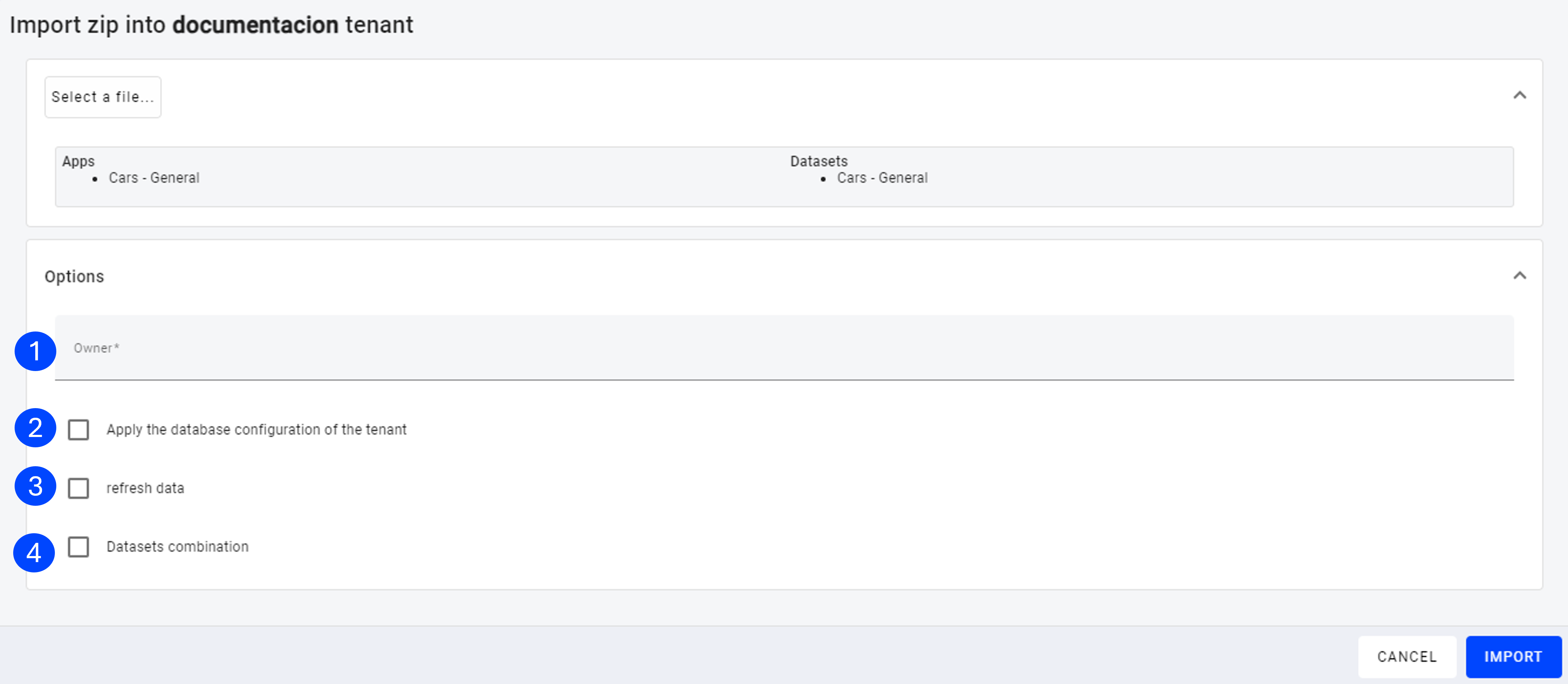Import ZIP
From the Vision administration console it is possible to export/import dashboards and datasets to/from json files compressed as zips. In the case that there is already a version of a dashboard that you want to import, you have to decide what to do with the changes or differences between both versions of the dashboard and the datasets. For this purpose, the import menu presents several options that the administrator decides how to use. The administrator must explicitly choose the owner of the dashboard and datasets among the existing ones in the tenant, since the owner saved in the imported app does not even have to exist in the Vision instance. Also, in case the owner who exported the zip is the same as the one who imported it, the folder or location in the directory tree where dashboard and datasets are located is preserved. Otherwise dashboard and datasets are placed in the root folder. Each tenant has the option to define and save a main database connection option. When importing, it is possible to indicate whether or not to associate this configuration to the imported datasets: The import file contains datasets without data, so if this option is enabled in case of having a database connection, or having another dataset as data source, a data refresh is launched to populate the corresponding datasets. When a zip file is imported, it is possible that the dashboard and the datasets it contains already exist. In this case it is necessary to indicate what is done with the already existing information: it is kept, modified or "combined". 1. Properties that are always maintained There are some properties that, although related to the dataset, are univocally linked to the scope of the administration of the instance where the import is performed: 2. Properties that are always modified 3. Combine datasets When this option is enabled, a mix or combination is made, in some cases ignoring the specific properties that come in the zip and keeping the existing ones, and in others taking those in the zip and discarding the existing ones. The currently established rule prioritizes the information that is imported in the zip except in the following cases:Import Options

1. Owner
2. Apply the tenant's database configuration
Note: please note that the access to the databases that come in the imported file may not work from this instance of Vision.3. Refresh data
4. Combine datasets
There are a series of properties that are always configured as they are in the imported file (the original information is overwritten), regardless of how they are in the existing dataset.
login para deixar a sua opinião.